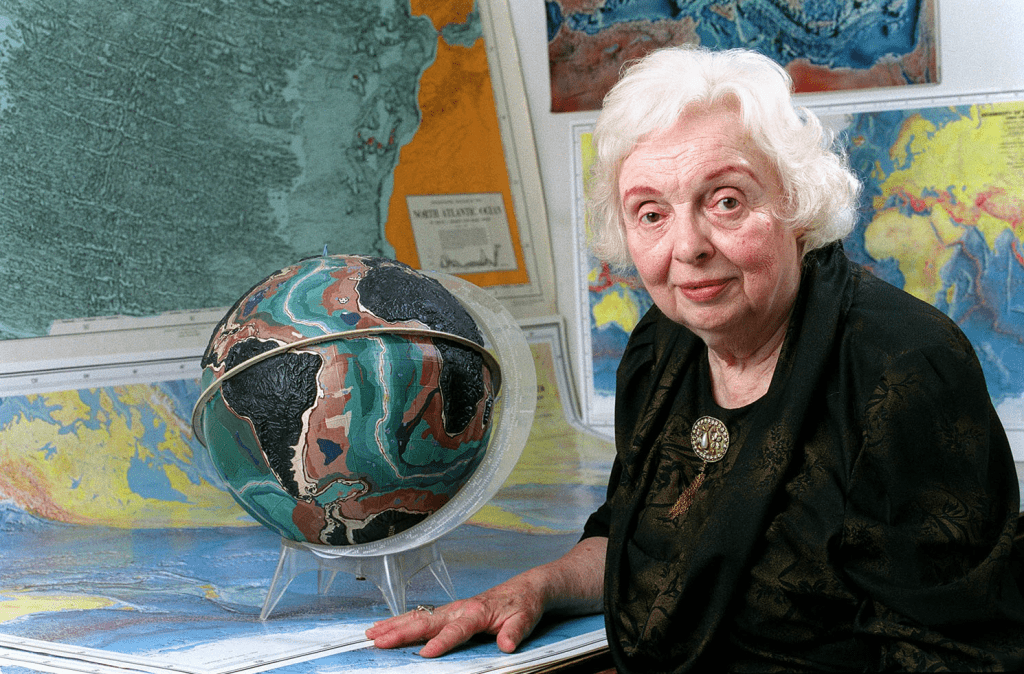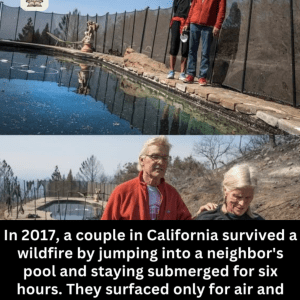Breaking Barriers Without Ever Leaving the Shore
In a time when women were routinely told what they couldn’t do, Marie Tharp proved what one person could accomplish with determination, intellect, and a pencil. Barred from joining scientific expeditions simply because she was a woman, Tharp stayed behind while her male colleagues went to sea. But what she accomplished from her desk would end up changing the world of science forever.
Her story isn’t just about geology. It’s about resilience, vision, and rewriting the rules when the world refuses to hand you a seat at the table.

Drawing What No One Had Seen Before
During the 1950s, Tharp worked at Columbia University’s Lamont Geological Observatory, partnering with geologist Bruce Heezen. He and others collected echo-sounding data from ships that crossed the Atlantic Ocean, but it was Tharp who turned this data into hand-drawn maps.
Video: How One Brilliant Woman Mapped the Secrets of the Ocean Floor | Short Film Showcase
Sifting through miles of sonar readings, Tharp noticed something strange a deep, continuous valley running down the center of the Mid-Atlantic Ridge. At first, her observation was dismissed by her male colleagues. Heezen even called it “girl talk.” But Tharp had data to back her up, and she didn’t back down.
She kept drawing. And as more data came in, the truth became undeniable: there was a massive rift valley, thousands of miles long, cutting through the ocean floor. It was the first concrete evidence of plate tectonics, a theory that would later become one of the most important foundations in earth sciences.
Changing the Way We See the Planet
Tharp’s work helped reveal that the ocean floor wasn’t flat, as many believed, but instead featured vast mountain ranges, valleys, and geological activity that rivaled the landscapes above sea level. The maps she created by hand showed the world that Earth’s crust was broken into pieces that moved over time a groundbreaking idea at the time.

Her 1977 World Ocean Floor Map, created with Heezen, was the first comprehensive view of the entire ocean bottom. Vibrantly colored and beautifully detailed, it wasn’t just a scientific achievement it was a work of art. That map helped scientists visualize the scale of the Earth’s tectonic activity and remains a touchstone in geology and oceanography.
Today, versions of her map appear in digital platforms like Google Ocean, allowing new generations to explore the deep-sea landscapes she first uncovered from a quiet office in New York.
Recognition That Came Late but Lasted
Like many pioneering women in science, Marie Tharp’s contributions were long overlooked. For years, Heezen received the lion’s share of credit for their collaborative work, even though Tharp’s mapping and analysis were essential. Only in the later decades of her life did she begin to receive recognition.
Video: The Scientist Who Mapped the Seafloor: Marie Tharp | Great Minds
In 1997, the Library of Congress named her one of the four greatest cartographers of the 20th century. In 2001, Columbia University officially honored her achievements. And today, her story is being rediscovered by a new generation of scientists, educators, and students who find inspiration in her quiet but revolutionary legacy.
Brilliance Doesn’t Need Permission
Tharp’s journey is a reminder that innovation often comes from unexpected places. She didn’t need to be on the ship to make history. Her maps not only reshaped geology they redefined who gets to do science. In a field where women were told to stay in the background, Tharp stepped forward and made the entire planet her canvas.
Her work paved the way for our modern understanding of how continents drift, how earthquakes occur, and how the Earth itself evolves. But perhaps even more importantly, her life teaches us that sometimes, the most powerful discoveries begin with someone quietly refusing to accept the limits placed on them.

Final Thoughts: A Quiet Revolution Beneath the Waves
Marie Tharp may not have sailed the seas herself, but she helped us all understand what lies beneath them. Her legacy isn’t just the maps she drew or the theories she supported it’s the lesson that perseverance, observation, and critical thinking can shape the course of science, no matter where you sit.
She didn’t need permission to be brilliant. And because of her, the depths of our oceans became a little less mysterious and our world a lot more connected.



